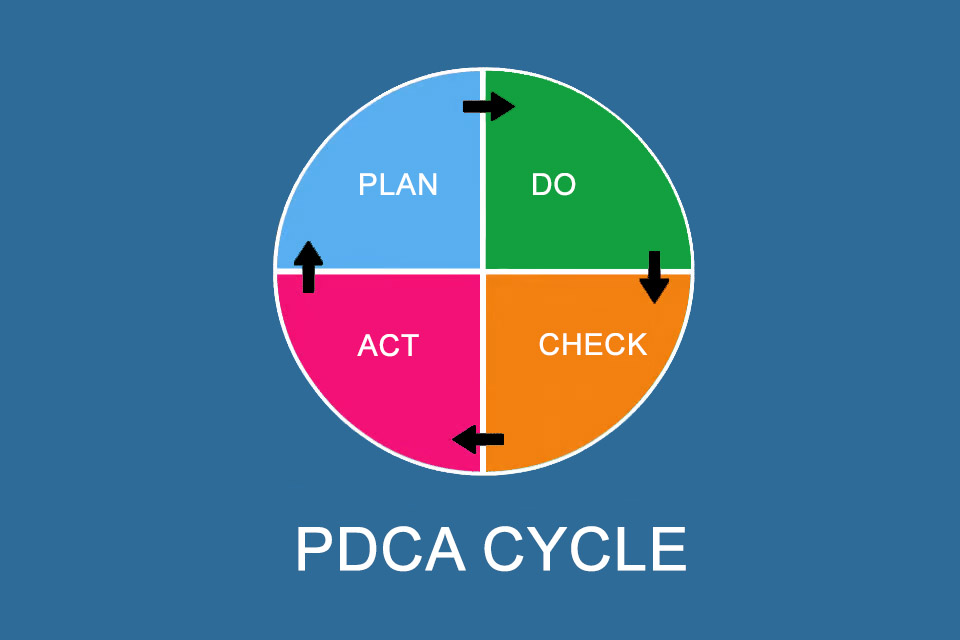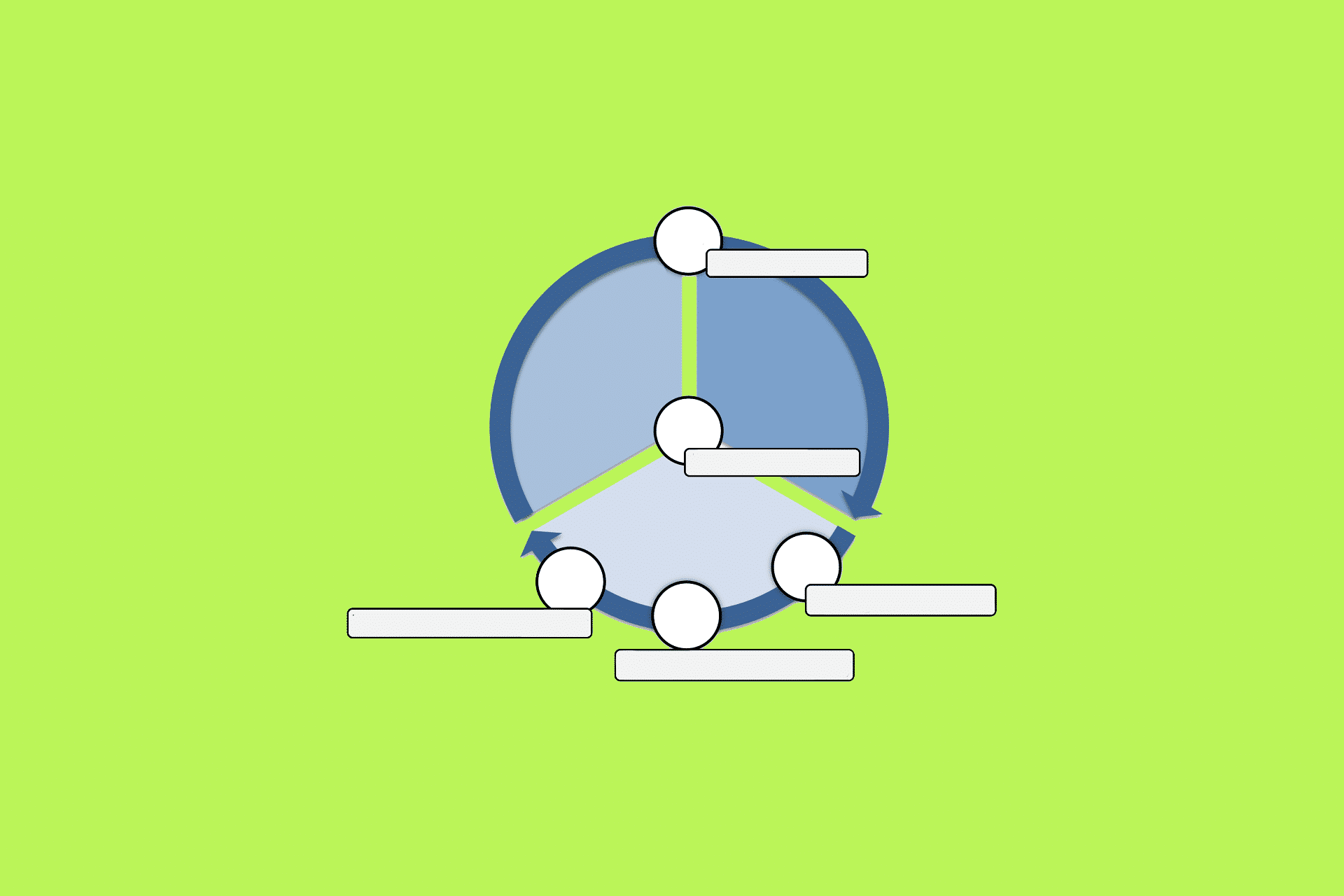What is the PDCA Cycle?
Smartpedia: The PDCA cycle is a continuous improvement approach that iteratively goes through four phases – Plan, Do, Check, Act.
PDCA cycle – taking action in a planned way
Companies continuously strengthen their competitiveness with iterative improvement steps. One way to improve is the so-called PDCA cycle. It is universally applicable and comprises four phases that give it its name:
- P – Plan
- D – Do
- C – Check
- A – Act
The PDCA cycle is considered an important method in corporate quality management – hence the PDCA method is also discussed. Other disciplines such as project management also use phase-based approaches, even if PDCA is not always explicitly mentioned by name:
- The DIN 69901 series of standards, for example, mentions the initiation, definition, planning, control and completion of projects as central elements in project management.
- The British project management method PRINCE2 calls for planning, delegating, monitoring and controlling all aspects of a project.
- And the International Competence Baseline (ICB) also calls for planning, organisation, monitoring and control of projects.
However, looking at a situation, creating and implementing an appropriate plan, reviewing the implementation and making adjustments to the measures if necessary is so universal that related approaches are not surprising. There are countless approaches, such as the development of minimum viable products or the design of prototypes, that function in a similar way. And even frameworks like Scrum, which work with reviews and retrospectives, are based on plans, implementations and reviews.
The origin of the PDCA cycle
The PDCA cycle is also known as the Deming circle, Deming wheel, Deming cycle or Shewhart cycle.
The US-American physicist Walter Andrew Shewhart published the book “Statistical Method from the Viewpoint of Quality Control” in 1939.¹ In the book he highlighted production processes based on the phases specification, production and inspection. He did not like the sequential presentation:
“These three steps must go in a circle instead of in a straight line … In this sense, specification, production and inspection correspond respectively to making a hypothesis, carrying out an experiment, and testing the hypothesis. The three steps constitute a dynamic scientific process of acquiring knowledge.”
The Shewhart cycle with a circular representation was born.
The US physicist, statistician and pioneer of quality management William Edwards Deming² had studied with Shewart and spread his ideas. In the course of time, he was credited with the process-oriented view of companies’ activities. The Deming Circle, the Deming Wheel or the Deming Cycle were born.
The four phases of the PDCA cycle
When carrying out a PDCA cycle, the procedure is divided into four phases or steps:
Phase 1: Plan
In the Plan phase, the actual situation is recorded, assumptions are made, a goal is formulated with suitable criteria and measures are determined with which the actual situation can be improved. According to Walter Andrew Shewhart, Plan is the creation of a hypothesis and not the creation of a project plan. Accordingly, the phases of the PDCA cycle are not comparable with the previously mentioned project phases of DIN 69901, PRINCE2 or ICB.
Phase 2: Do
The Do phase is about implementing the previously defined measures. The extent of implementation varies from case to case. Some publications state that complete projects can be realised in the Do phase; however, if it is a hypothesis to be tested, methods such as pretotyping, with which product ideas or even hypotheses are tested with minimal effort, could be useful.
Phase 3: Check
The Check phase is about checking the measures that have been implemented. Do they need to be adjusted? Did they work and did the desired result occur? Or: Has the hypothesis not been confirmed and the measures have to be stopped or even reversed? William Edwards Deming later called this step “study” to emphasise that it is not enough to simply look at how the measures have worked. It is important to recognise correlations and causalities and to learn from them; this is why we sometimes speak of a PDSA cycle.
Phase 4: Act
The Act phase is about implementing the findings from the previous phase.³ A good practice may have been discovered (the PDCA cycle itself is also a suitable example of a good or best practice), a hypothesis may have been confirmed and thus the basis for product development has been laid. What action follows from the findings depends on the individual case. What follows in any case is the Plan phase, because on the one hand the deming circle is a cycle, and on the other hand it is an approach to the continuous improvement of work steps, processes, developments, etc. The plan phase is the first step in the process.
Examples of a deming circle
Here are two examples of the deming circle:
Example 1: You are a manufacturer of cosmetic product X, which you sell through the stationary trade in specialised drugstores.
- Plan: You want to increase sales of product X. The hypothesis is: This can be achieved with different packaging. To test the hypothesis, they want to use an impersonator. An impersonator is a technique often used to test new packaging.
- Do: They provide staff capacity to design new packaging with summery, friendly colours. They then place the new packaging in a few selected drugstores on the shelf next to their product with the previous packaging.
- Check: You observe customer behaviour and count how often customers reach for the old and how often for the new packaging. You may also conduct on-site customer interviews and inquire about the motivations for choosing old versus new.
- Act: If more customers reach for the new packaging, extend the test to additional markets. If fewer customers reached for the new packaging, consider whether the hypothesis itself was wrong, whether they should revise the new packaging again or try another measure to increase sales.
Example 2: You manage an IT department with 80 employees that is to develop in the direction of a self-learning organisation.
- Plan: You notice that despite all your efforts, some teams do not participate in joint activities and reject the project. You think about how you can involve these teams and decide not to set a programme for the next meeting of all employees in the IT department, but to let those present shape the exchange.
- Do: You call the next department meeting, organise some free offices for the possible exchange in small groups and explain the so-called barcamp format to all those present.
- Check: You observe how the exchange among each other develops. Which topics are addressed by individual teams? What is the mood like? What agreements are made between individual teams? What results are achieved? Etc.
- Act: If the barcamp format is a success – this could be determined by ROTI feedback – then use it again in future meetings. If the feedback from participants suggests improvements, then try to implement them at the next meeting.
The list of examples for the PDCA cycle can easily be extended, because a step-by-step approach to gaining knowledge is purely day-to-day business for the vast majority of organisations.
Impulse to discuss
Notes:
If you like the article or would like to discuss it, please feel free to share it in your network. And if you have any comments, please do not hesitate to send us a message.
[1] Statistical Method from the Viewpoint of Quality Control
[2] William Edwards Deming
[3] Some publications also speak of Adjust instead of Act.
Here you will find additional information from the t2informatik Blog:



